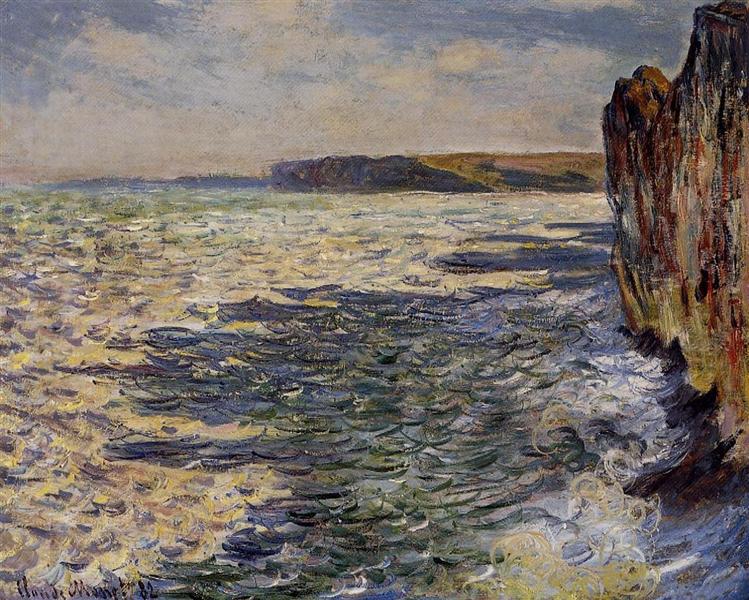Description
Claude Monet's 1882 painting "Waves and Rocks at Pourville" is a charming example of the artist's mastery of depicting the natural environment and his fascination with the effects of light and water. This work captures a moment on the coast of Pourville-sur-Mer, a small town in Normandy, France, which Monet frequently visited. In this painting, the viewer is greeted by an explosion of visual energy that manifests itself through the waves crashing against the rocks in a vibrant and dynamic manner.
The composition is dominated by the movement of water, where the waves are depicted in a loose, almost impressionistic technique, characterized by the rapid application of the brush and long brush strokes that convey the feeling of fluidity and vitality. The waves are depicted in different shades of blue and green, suggesting the depth and transparency of the water. Monet also uses a palette of whites and grays to capture the rising foam, reflecting the ephemeral nature of each crumbling wave.
The work is structured in an asymmetrical composition that suggests an almost kinetic approach, just as a viewer might feel standing on the beach, watching the waves unfold before their eyes. The rocks, emerging from the water, provide a solid, earthy contrast to the fluid movement of the sea. These rock formations not only serve as a visual anchor, but are also rendered in warm shades of brown and beige, catching the sunlight that gives them a golden glow, revealing Monet’s mastery in capturing natural light.
On a thematic level, this work may evoke the artist's connection with nature, depicting not only the beauty of the coastal landscape, but also the transience and power of nature. Although there are no human characters in the painting, the absence of human figures in such a natural context invites the viewer to fully immerse themselves in the scene, to be part of the landscape and to contemplate the majesty of creation.
Monet, a pioneer of the Impressionist movement, challenged the conventions of his time by focusing on visual perception rather than the precise representation of form. Waves and Rocks at Pourville is a clear example of this philosophy, where loose brushstrokes and a vibrant color palette replace defined shapes. This approach aligns with other works from the same period, such as Impression, Sunrise, which also highlights the desire to capture not only the appearance of a specific moment, but also its atmosphere and emotion.
Monet's work in this work reflects his tireless research into the effect of light and atmosphere on the landscape, which would become a signature of his artistic career. The relationship between water and light, as well as the interaction of waves and rocks, resonates with his understanding of the aquatic environment, a recurring and significant theme in his career. The viewer, when contemplating "Waves and Rocks at Pourville", is transported to a moment in time where nature comes to life through Monet's painterly skill. This work is not only a celebration of the Normandy coast, but also an invitation to reflect on our relationship with the natural environment that surrounds us.
KUADROS ©, a famous painting on your wall.
Hand-made oil painting reproductions, with the quality of professional artists and the distinctive seal of KUADROS ©.
Painting reproduction service with satisfaction guarantee. If you are not completely satisfied with the replica of your painting, we will refund 100% of your money.

